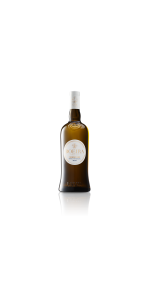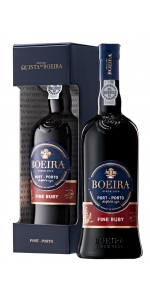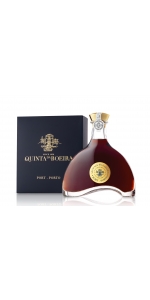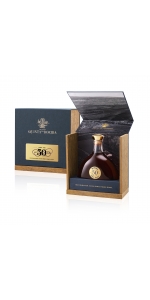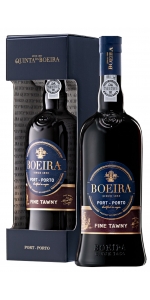Wine from Boeira
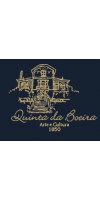
Quinta da Boeira was built by an emigrant named Manuel da Rocha Romariz, who returned from Brazil in the early 19th century. Knowing the Brazilian market, he registered as an exporter of Port Wine in 1850, using two trade names for the labels: ROMARIZ and BOEIRA.
These brands quickly won the consideration and confidence of consumers and distributors due to their quality, expanding to several markets, among which Portuguese, English, French and Brazilian stood out, among others.
In 1966, the property was acquired by an English family, the warehouses by a textile company and the wines were sold to a Port Wine exporting company.
In 1999 the property was put up for sale with the main interest of a contractor who intended to build luxury homes in a closed condominium.
Father João de Freitas Ferreira, director of a school in Vila Nova de Gaia, warned of the situation of the eminent possibility that the 3 hectares of the property could be transformed into massive construction, with the consequent destruction of its centennial grove.
Concerned and sensitized to the cause, Father João de Freitas Ferreira, integrating a group of ten friends, decided to acquire the property, thus protecting the centenary trees and the palace of the early 19th century.
For the acquisition of the property, a financial study was carried out with the division of investments into five phases:
FIRST PHASE
The transformation of stables and greenhouses into a multi-purpose hall with auditorium and the restoration of all paths in the gardens represented the initial phase of the project which, from the beginning, intended to transform Quinta da Boeira into a visiting room in the north of the country and, more specifically , in Vila Nova de Gaia.
SECOND PHASE
The recovery of the mansion, which was in an advanced state of deterioration, began, transforming it into offices and a luxury restaurant with a capacity for about 80 people seated.
THIRD PHASE
In order to attract tourists to the high elevation of the city of Vila Nova de Gaia, the largest bottle in the world was built, measuring 32 meters in length and 10 in diameter, thus allowing the creation of a tasting room and exhibition room to promote Portuguese wines, culture and gastronomy. It was also possible to adapt the room for the transmission of films in 3D, letting tourists know the different wine regions of Portugal.
FOURTH PHASE
With the objective of financially consolidating the entire project, Quinta da Boeira registered at the Instituto dos Vinhos do Douro e do Porto (IVDP) in 2017, thus returning to the genesis of Quinta da Boeira in 1850, as an exporter of Vinhos do Porto, under the BOEIRA brand.
FIFTH PHASE
The project, in its fifth and final phase, concluded with the construction of a 5-star hotel, with 119 rooms and 5 suites, whose construction was based on the green system. The most up-to-date environmental techniques were implemented, such as the use of groundwater to supply sanitary tanks and automatic irrigation of about 3 hectares of the property, with photovoltaic and solar energy also being used, which allowed for remarkable savings and drastic reduction in carbon emissions, transforming it into an ECO hotel.
The most recent challenge was the acquisition of the C. da Silva family home, a name also linked to the export of Port Wines, designed in the 19th century by the architect Teixeira Lopes. Quinta da Boeira is a reference in wines of superior quality, namely in Port Wine, duly certified by the Institute of Douro and Port Wines and proudly marked with the knight seal on the neck, according to the guidelines that the Observatório do Port wine advocates for the defense of the Porto Denomination of Origin.
Each Quinta da Boeira wine is a unique experience, in which Wine and Art are intimately linked, having their maximum exponent in unique bottles and which are distinguished by their shape and aesthetics, such as Diamond or Decanter.
Boeira Douro White 40% Malvasia Fina, 30% Rabigato, 20% Gouveio and 10% Fernão Pires.
Good volume in mouth revealing its fruity character, now enhanced with a citrus component. Slight mineral touch that gives it personality. It is a complex and deep wine with a persistent finish.
Good accompaniment to fish dishes, salads, and can also be drunk as appetizers. Should be consumed at a temperature between 8º and 10ºC.
Medium intensity ruby color.
Nose dominated by red fruits.
In the mouth, elegant structure with solid but well integrated tannins. Rich and fruity finish.
RS: 104 g/Liter
TA: 3.8 g/Liter
pH 3.73
It has a brownish red color. Intense and complex, aged for many years in French oak. It has an elegant cigar leaf aroma. Dense and round in the mouth with dried fruit, honey and notes of crystallized fruit. A velvety and persistent finish.
RS: 114g/Liter
TA: 3.7g/Liter
No irrigation, Harvest by hand, Port wine traditional method: (Fermentation, with skin maceration, takes place a a controlled temperature and is interrupted by the addition of grape spirits).
Aged in 550 Liters French Oak barrels with an average age of 40 years.
Slightly filtered before bottling.
Pairings: Digestive: Dried fruits, caramel sweets and conventual sweets (portugueuse pastries)
Boeira Tawny 50 Year Port is produced from Touriga Nacional, Touriga Franca, Tinta Roriz, Tinta Barroca and Tinto Cao.
Brownish color with strong coppery reflections. Toasted almonds and dried fruit stand out on the nose, with a delicate sweetness. Intense flavors on the plate, but a refinement and elegance that reflects its level of ageing. A very long evolving finish.
Boeira 50 Years Old Port is excellent as a digestive.
pH : 3.57TA : 9.48 g/L
RS : 152g/L
Then, it is aged for 50 years in 550 liter French oak barrels.
Traditional Porto winemaking with skin contact maceration and short alcoholic fermentation in stainless steel tanks followed by fortification.
Golden red color.
On the nose, aromas of red fruits with the complexity of dried fruits.
In the mouth, its freshness is combined with a natural sweetness and a slight touch of wood.
RS: 134 g/Liter
TA: 3.3 g/Liter
pH: 3.6
- back
Selected Options
Wineries
Categories
Pricing
Countries
Regions
Grape Types
Wineries
Organic/Free Shipping
G.D. Vajra Bricco Delle Viole Barolo is made from 100 percent Nebbiolo.
The Barolo Bricco delle Viole shows the signature verticality of its vineyard. The wine is beautifully layered and - while restrained as it’s always the case in the youth of Bricco delle Viole - it also shows a complexity of layers with purple flowers, sweet spices and mineral tones. The palate is noble, with a refined acid spine and profound tannins that promise a long aging potential.
Among the historical vineyards of Barolo, Bricco delle Viole is the highest and the closest to the Alps. It rises from 400 to 480 meters above sea level, on the Western ridge of the village. Its name, “Hill of Violets”, originates from the flowers that blossom early here due to the perfect south exposure. Up above the fogs, Bricco delle Viole enjoys the earliest sunrise and the last sunset every day. Thanks to its vines dating back to 1949 and -now- 1931, a dramatic diuturnal temperature range and this pure light, Bricco delle Viole generates a sophisticated and profound Barolo DOCG of bright aromatics, chiseled tannins and subtle minerality. 2018 is a vintage that shows many nuances of Bricco delle Viole: beyond the signature verticality of this site, the wine offers high tones laced with mineral nuances and plenty of energy and youth.
Review:
A juicy Barolo, with vibrant acidity and a fluid profile that exudes cherry, raspberry, mown hay, mineral and eucalyptus aromas and flavors. Tight yet long, with excellent potential.
#26 Wine Spectator Top 100 of 2023
The last wine poured at my tasting at the winery is the G.D. Vajra 2019 Barolo Bricco delle Viole. With its high vantage point in the hills west of Barolo, Bricco delle Viole is a world apart in terms of soils (with Sant'Agata marl and fossils) and even harvest times. Slow and careful ripening like the kind that characterizes fruit in 2019 renders a very delicate and ethereal expression with floral tones, wild mint and licorice. This organic wine is solid in build and structure. Indeed, Isidoro Vaira remarks that Nebbiolo tannins have changed since the 1970s and 1980s.
-Wine Advocate 97+ Points
Jeweled in appearance, the 2019 Barolo Bricco Delle Viole may be the best wine I have tried yet from Vajra. Its gorgeous and alluring perfume of fresh roses is followed by a Burgundian, elegant red with incredible length and no harsh edges, fine and present tannins, and beautiful, graceful concentration. It is drinking well now, and I will be trying to get my hands on as much of this as possible. Drink 2025-2045.
-Jeb Dunnuck 97 Points
Post & Beam by Far Niente Sonoma Coast Pinot Noir is made from 100% Pinot Noir.
Post & Beam Pinot Noir, crafted with the same care and expertise that defines Far Niente Wine Estates, is sourced from the Sonoma Coast's cool, coastal vineyards. This wine offers vibrant acidity, expressive fruit, and nuanced complexity, with aromas of ripe red fruit and a hint of spice. The smooth, balanced palate finishes with elegance, making it perfect for backyard get-togethers.

